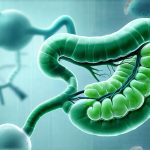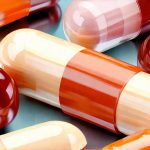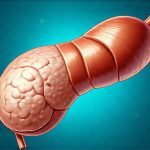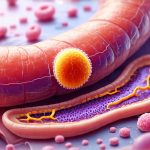The gallbladder, often overlooked in discussions about digestive health, is a surprisingly vital organ playing a central role in how our bodies process fats. Many people don’t even realize they have a gallbladder until something goes wrong, leading to discomfort and disruption of daily life. It’s not directly involved in the chemical breakdown of food itself, but rather acts as a storage facility and concentrator for bile – a fluid crucial for fat digestion. Understanding the role of bile is key to appreciating this small but mighty component of our anatomy.
This article will delve into the intricacies of gallbladder function, explaining its role in the broader context of digestion, specifically focusing on fat metabolism. We’ll explore the connection between gallbladder issues and nausea, a common symptom that often accompanies digestive distress. Beyond simply defining the problem, we aim to provide a comprehensive understanding that empowers you to better understand your body and recognize potential signs when seeking further information from healthcare professionals. This is not intended as medical advice; rather, it’s an educational overview of this essential organ and its functions.
Gallbladder Function: Storage, Concentration, And Release
The gallbladder’s primary job isn’t about initiating digestion but about optimizing the process, particularly when it comes to fats. Produced by the liver, bile is a complex fluid containing water, electrolytes, cholesterol, bilirubin (a waste product), and bile salts. These bile salts are the workhorses of fat digestion, acting as emulsifiers – substances that break down large globules of fat into smaller droplets. This increases the surface area for digestive enzymes like lipase to act upon, enabling efficient absorption of fats in the small intestine. The liver continuously produces bile, but it’s not always needed immediately after a meal. This is where the gallbladder comes in.
The gallbladder acts as a reservoir, storing and concentrating this bile between meals. It can hold up to 40ml of bile, and through reabsorption of water and electrolytes, concentrates the bile four to eight times its original strength. This concentration process makes it much more effective when released during digestion. The release is triggered by cholecystokinin (CCK), a hormone produced in the small intestine when fatty foods enter. CCK signals the gallbladder to contract, squeezing stored bile through the cystic duct and common bile duct into the duodenum – the first part of the small intestine.
This coordinated process ensures that bile is available when needed, precisely at the moment fats are entering the digestive system. Without adequate bile flow, fat digestion suffers, leading to symptoms like bloating, gas, diarrhea, and potentially nutrient deficiencies over time. The gallbladder’s efficient storage and release mechanism is therefore crucial for maintaining healthy digestion and overall nutritional status. It’s important to remember that a functioning gallbladder isn’t just about preventing digestive upset; it contributes significantly to how well our bodies absorb essential fats and fat-soluble vitamins (A, D, E, and K).
The Connection Between Gallbladder Issues And Nausea
Nausea is a frequent companion to many gastrointestinal problems, and gallbladder dysfunction is no exception. But why does a problem with this relatively small organ lead to feelings of sickness? Several mechanisms are at play. First, impaired bile flow can result in a buildup of bile acids within the gallbladder itself. This stagnation can cause inflammation and irritation, triggering nerve signals that the brain interprets as nausea. The sensation isn’t necessarily coming from the stomach directly; it’s often a neurological response to discomfort in the biliary system.
- Inflammation due to gallstones (cholelithiasis) is a common cause of gallbladder-related nausea.
- Bile duct obstruction, whether from stones or other causes, can also lead to a rapid buildup of bile acids and subsequent nausea.
- In some cases, even functional gallbladder disorders – where the gallbladder isn’t emptying correctly despite being free of stones – can produce similar symptoms due to altered bile flow.
Furthermore, the body’s attempt to digest fats without sufficient bile leads to malabsorption. Undigested fat in the intestines can cause bloating, cramping, and diarrhea, all contributing factors to nausea. The gut-brain axis also plays a role; the digestive system communicates with the brain via nerves and hormones, and disruptions in digestion can send signals that trigger feelings of sickness. It’s often difficult to pinpoint gallbladder issues as the sole cause of nausea, as it frequently occurs alongside other symptoms like abdominal pain, bloating, and changes in bowel habits. Understanding gut pH can also help explain some triggers for these issues.
Diagnosing Gallbladder Problems And Seeking Help
Diagnosing gallbladder problems requires a thorough evaluation by a healthcare professional. While self-diagnosis is never recommended, being aware of potential signs can prompt you to seek medical attention. Common diagnostic tools include:
- Ultrasound: A non-invasive imaging technique that can detect gallstones and assess the thickness of the gallbladder wall.
- HIDA Scan (Hepatobiliary Iminodiacetic Acid scan): This nuclear medicine test assesses gallbladder function, specifically how well it empties bile. It involves injecting a small amount of radioactive tracer to visualize bile flow.
- Endoscopic Retrograde Cholangiopancreatography (ERCP): A more invasive procedure used to examine the bile ducts and potentially remove stones or obstructions. This is typically reserved for cases where other tests are inconclusive, or intervention is needed.
It’s crucial to consult a doctor if you experience persistent abdominal pain, especially in the upper right quadrant, nausea, vomiting, bloating, jaundice (yellowing of the skin and eyes), or changes in stool color. These symptoms could indicate a range of conditions, not just gallbladder issues, so accurate diagnosis is paramount. Treatment options vary depending on the underlying cause – from medication to manage mild inflammation to surgical removal of the gallbladder (cholecystectomy) for more severe cases. Feeling safe while eating is important during this process, as anxiety can exacerbate symptoms.
Important Note: While many people live healthy lives after gallbladder removal, it’s essential to discuss potential dietary adjustments with your doctor to ensure optimal digestion and nutrient absorption post-surgery. The body adapts, but understanding how to support digestive function is key. The pancreas’ role becomes more prominent after gallbladder removal, as it takes on a larger part of the digestion workload. Even high-scent foods can become triggers for some individuals post-surgery.


















